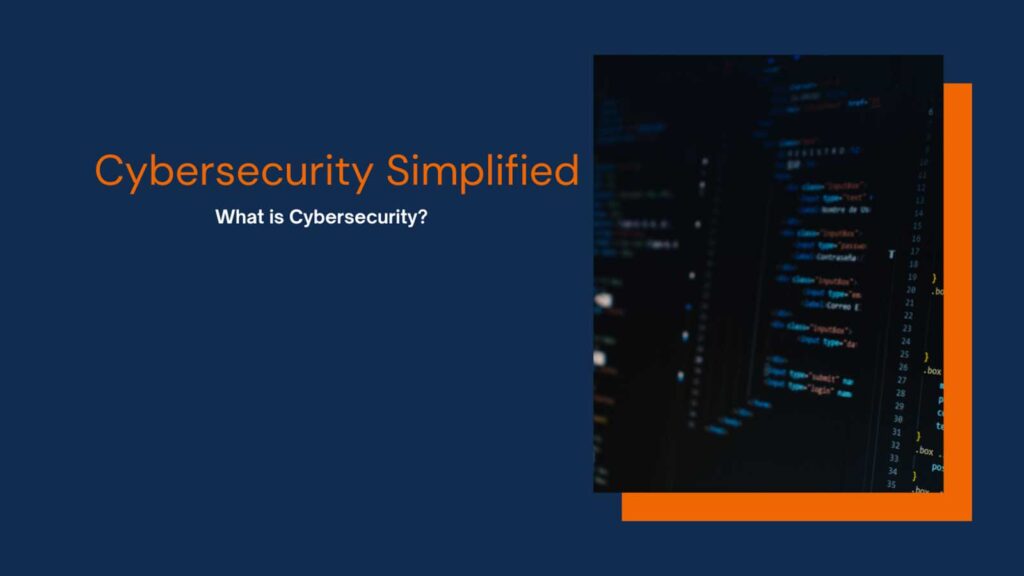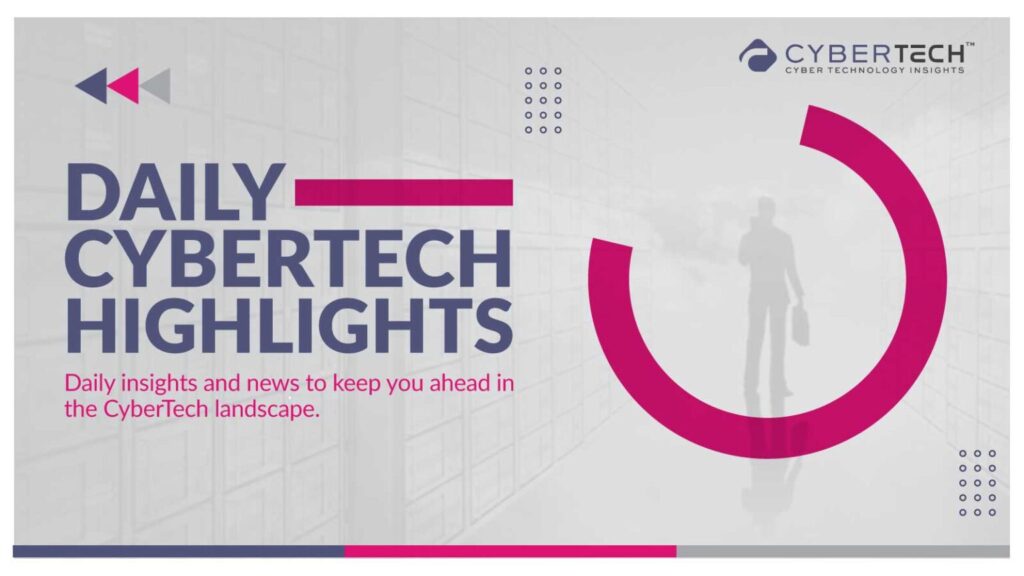Ready to understand cybersecurity in 2025? We bring you “Cybersecurity Simplified”, a novel effort to simplify the basic terminologies, technologies, techniques, concepts, and insights related to cybersecurity. According to ISC2, AI will replace “some” of the cybersecurity skills required to handle cybersecurity threats and data security incidents. The report titled “ISC2 Cybersecurity Workforce Study” identified the need for a stronger initiative to put Generative AI and cybersecurity training strategies in the driver’s seat to tackle threats. Through our dedicated “Cybersecurity Simplified” program, we will simplify the basic terminologies, technologies, techniques, concepts, and insights related to cybersecurity.
So, let’s start with “cybersecurity.”
What is Cybersecurity?
The teams handling cybersecurity in 2025 will have new types of challenges and threats. Before we go there, let’s define cybersecurity for you.
The term ‘cybersecurity’ is a portmanteau of two words: cyber and security. The word cyber itself has a “punk” origin, tracing its first usage to the early and mid-1940s before the Cold War made it common to use as a combination for cyber-war, cyber-crime, cyber-defense, cyber-ops, and so on.
According to a source, cybersecurity is defined as the practice of protecting digital information across various platforms—whether it’s stored on individual computers, within corporate networks, on the internet, or on cloud-based storage systems.
According to NIST, cybersecurity is defined as “the ability to protect or defend the use of cyberspace from cyberattacks.” Today, cybersecurity and information security have branched out into two different landscapes. While cybersecurity involves defending cyberspace from cybercriminals, hackers, and malicious actors who seek to steal, damage, or exploit data, information security refers to the protection of information and the assets that hold this information from unauthorized access and use.
Simply put, cybersecurity is how we shield our digital world from those who aim to cause harm, while information security shields assets from acting as vectors for cybersecurity incidents.
Why is cybersecurity so important? What makes it a hot topic to explore?
In recent times, the buzz around cybersecurity has witnessed a dramatic rise, all thanks to cyberattacks led by the rapid adaptation of cyber-related technologies.
According to Gartner, an American management and consulting firm, “Worldwide end-user spending on information security is projected to total $212 billion in 2025, an increase of 15.1% from 2024.” They added, “In 2024, global information security end-user spending is estimated to reach $183.9 billion.”The internet headlines talking about cybersecurity say a lot about the issue and how important it is to explore. However, given the limited information and not-so-tech-savvy users, it is important to have a clear and accurate source of information about the cybersecurity and tech around it.
The leading cloud security platform, Sysdig highlights the urgency for combating risk with speed and accuracy — a distinct approach to modern-day cybersecurity initiatives. Why?
The timely identification of security events and the collection of relevant data are critical for meeting regulatory cybersecurity disclosure requirements and ensuring compliance. Organizations need to implement streamlined processes for promptly detecting security incidents and gathering the necessary evidence to support required disclosures. Additionally, documenting these detection procedures is essential for maintaining transparency and accountability, enabling organizations to demonstrate adherence to regulatory standards that mandate both the quick identification and proper reporting of cybersecurity incidents.
Cybersecurity and Businesses
Enterprise cybersecurity plays a vital role in keeping data safe from cyberattacks. It is an organization’s topmost and key component in its risk management strategy.
In the digital world, where businesses and our day-to-day activities are online and easy to access, cybersecurity and awareness are top priorities. Understanding the financial impact of a cyberattack in the form of a phishing scam or similar is another study that needs to be done.
As cyber criminals, and therefore their cyberattacks become more and more sophisticated, the cost of damage incurred by the victims has reached the sky. According to IBM’s Cost of a Data Breach Report 2024, the average cost of a data breach jumped 10% to USD 4.88 million from USD 4.45 million in 2023. This spike is the highest increase in the cost of data breaches since the COVID-19 pandemic.
Data breach is one of the main reasons behind the rise in global spending on cybersecurity. At the enterprise level, safeguarding and preventing financial assets has taken a major place in spending. Cyberattacks on financial assets such as bank accounts, stock market, or securities/data could leave the organizations and their operation in the middle of nowhere if not taken cybersecurity measures seriously.
As cyber criminals get sophisticated with cyberattacks and data breaches, preventing financial assets from phishing scams and ransomware has taken a major spot in global spending. Cybersecurity majorly aims to protect businesses’ electronic systems including data from phishing attacks and safeguard from ransomware and data theft.
Preparing for Cybersecurity in 2025: Understanding the Roles and Responsibilities
Cybersecurity is the front line of defense that protects and defends businesses’ internet-connected devices and services from malicious attacks and spam by cybercriminals and hackers. In a digital business world, it is hard to believe how the potential threats every internet-connected device and platform offers. However, it is not hard to analyze the potential threats to the business in case of a cyberattack.
In common terms, cybersecurity has been used as a whole to describe the process of protection against every form of cybercrime on the internet. Although a contemporary cybersecurity strategy is not limited to the internet, it can be traced back from the miscellaneous loopholes in the operation of day-to-day activities. Cybersecurity professionals understand and are aware of the fact that data is the new oil. Businesses use data to grow operations and boost productivity, however, any data breach by cyber criminals can harm the businesses.
Cybersecurity faces major challenges in protecting businesses from cybercriminals and hackers. In today’s digital world, one cannot ignore cybersecurity. Cyberattacks by the cyber criminals can cause:
· Disrupt operations
· Identity theft
· Ransomware
· Loss of sensitive information
· Financial losses
· Electronic and device risk
· Data breach
· Phishing schemes
A small cyberattack or security breach can lead to multiple cyberattacks and expose the personal information of millions of people. Not only this, it could lead to a series of other security breaches and turn into a serious breach of security and endanger the security of the people and the business if the data is used in the wrong way by the hackers. The cybersecurity challenges are not limited to protecting the information but also learning how to improve and enhance cybersecurity measures.
Overview: Important Types of Cybersecurity in 2025 You Should Know
Every organization or business has a wide variety of systems, which are established to fulfill the organization’s daily operations. These devices and connected infrastructure need a coordinated effort across all its systems to run effectively and efficiently. Moreover, these connected devices have a strong cybersecurity posture to handle the operations and keep them secure from malware or any cyberattack. Although an organization’s IT infrastructure layer is secure, comprehensive cybersecurity strategies are required to protect against cyberattacks or threats by hackers or scammers.
In a rising digital infrastructure, cybersecurity threats are also gradually growing in volume and complexity with more and more advanced and sophisticated cybercriminals. With the rise in various security concerns and threats, the scammers began to advance their strategies, which led to a more sophisticated first line of defense against various types of cyber threats.
In simple words, the more advanced and sophisticated cyber threats evolve, the more our cybersecurity and defense need to evolve to tackle the threats. As cybersecurity professionals, it is important to understand that cyber threats can be prevented with robust cyber resilience measures.
Here are the most advanced types of cybersecurity in 2025 that we all need to understand:
- Artificial Intelligence (AI) security
Artificial Intelligence or AI security refers to the measures and solutions to identify safe and malicious behaviors. The AI security cross-compares the behaviors of users across an environment to those in a similar environment to identify the safety against malicious behaviors. The measure is used to prevent cyberattacks that target AI applications that use AI in a suspicious way. Generative AI images, texts, or deepfake videos are some AI-driven malicious ways of cyberattacks.
- Critical infrastructure security
Critical infrastructure consists of critical assets, computer systems, applications, and networks that provide functions and infrastructures necessary for our way of life. Critical infrastructure security is the form of cybersecurity that protects these systems including networks, and digital assets. These infrastructure act as a base for our digital base of society on which the society is dependent for national security including the economic and public safety of the citizens.
As critical infrastructure becomes more and more important for any economy or organization, the vulnerability of cyberattacks is also increasing.
- Network security
Network security is the field of cybersecurity designed to protect the usability and integrity of network and data-connected devices. It provides security to hardware as well as software technologies in an effort to smooth operations. It holds an important position in protecting the client data and information along with keeping shared data secure. Also, it ensures reliable access and network performance smooth and secure as well as protection from any potential cyber threats. The majority of cyberattacks start over a network.
Network security targets various threats and stops or limits them from entering your network. It has majorly three major aims;
First, to prevent unauthorized access to secure network resources, second, to detect and stop potential cyberattacks and security breaches in the process or any other threat, and third, to provide safe and secure access to authorized users into the network for smooth operations.
- Operational security (OpSec)
Operational security is a key component in any organization including the critical infrastructure. It covers a wide range of cybersecurity processes and technology, which are used to protect sensitive systems and data. The OPSEC activities emphasize on cybersecurity by establishing protocols for access and monitoring to detect unusual behavior that could be a sign of malicious activity.
- Application security (AppSec)
Application security as the name suggests focuses on preventing any malicious or unauthorized access into the system, network, or device. It prevents the use of apps and related data to enter the system or any potential harm to the network. It is the process of developing, adding, and testing security features within the system from being stolen or hijacked by cybercriminals. It may include majorly three major components, software, hardware, and the procedure that hardware, software and the procedures, which identify security vulnerabilities.
- Cloud Security
Cloud security is an important form of cybersecurity measures. It focuses on securing cloud computing systems and operates on the shared responsibility model. Securing cloud computing systems includes various forms of cybersecurity measures, which include keeping data safe and private across online-based applications, infrastructure, and platforms. In simple words, cloud security is a collection of procedures and technology designed and dedicated to address external and internal threats to the business security of their operation. The cloud providers are solely responsible for handling and securing the services that they deliver and the infrastructure that delivers them.
- Information security
Information security is a basic form of cybersecurity that focuses on protecting information by mitigating information risk from any form of phishing or scammers. Its sole purpose is to protect an organization’s important and sensitive information against unauthorized access or alteration. As owner, this sensitive information could be anything, from digital files and data to paper documents.
- Data Security
The protection of digital information means Data security. It is the process of safeguarding and securing digital information throughout its storage cycle. The sole purpose of data is to provide safe storage and protect it from theft, corruption, or unauthorized access in any way. In another way, data security is said to be a subset of information security, which focuses on securing any form of information within the organization. Data security follows the most cybersecurity-related Information Security measures. In particular, Data security covers everything, from hardware, and software, to storage devices, and even user devices. Moreover, it also has access and administrative controls.
- Mobile security
Mobile security puts emphasis on the comprehensive security of mobile devices from any form of malware, cyberattack, or phishing scams. While mobile security is the utmost important component in cyber security, it requires subtle approaches to prevent threats specifically targeting tablets, smartphones, laptops, and their users in the meantime for total security.
Mobile security also focuses on the security of Mobile Application Management (MAM) and Enterprise Mobile Management (EMM).
Digital Forensic in Cyber Security
Investigating compromised data or systems and locating evidence from digital devices are the main goals of the specialized area of digital forensics, often known as computer forensics or cyber forensics. It entails examining data from multiple sources, including network systems, mobile devices, and personal PCs. In simple words, Digital Forensics is the process of identifying, analyzing, preserving, and presenting digital evidence.
Digital forensics is not limited to any one role, it comprises several key components, each vital for a comprehensive investigation. Digital forensics plays a variety of roles in cybersecurity. It involves protecting the integrity of information systems and making sure that computer systems are resilient to cyberattacks; it goes beyond simple data recovery. Digital forensics is essential to cybersecurity incident response since it assists companies in detecting, evaluating, and lessening the effects of data security breaches and cyberattacks.
Preserving the digital evidence is the first thing to do when a security incident is suspected. To guarantee that data is gathered in a forensically sound manner, maintaining its integrity and authenticity, digital forensics specialists employ certain tools and methodologies. Log files, RAM dumps, network traffic recordings, and system snapshots are a few examples of this evidence.
Cybersecurity Challenges and Cybersecurity Professionals
Amid the rising adaptation of digital infrastructure around Internet of Things (IoT) devices, and various other internet-connected devices, the challenges in front of cybersecurity professionals are immense. In the recent past, Ransomware has come out as one of the most serious threats after data breaches in the digital world.
Cybersecurity challenges are on the rise given the fact cybercriminals are getting sophisticated with cyberattack practices. Most cybersecurity professionals are also getting used to these cyberattacks and are learning to various practices used by cybercriminals and adding to their knowledge baskets.
IoT devices are new devices or gadgets connected to the internet to communicate data over an internet network. These gadgets can be laptops, mobile phones, smart wearables such as smartwatches, smart home gadgets, or any other small or bag gadget connected to the internet over a network. These gadgets are most vulnerable to data security risks as these gadgets are connected to the internet 24/7 by the users.
Hackers utilize these vulnerable gadgets around you to use as a medium of cyberattack. These gadgets are mostly used to gain access to an user’s personal devices and sensitive data of information, which can be sold on the dark web or for ransomware. As an end user of these IoT devices, one needs to understand these gadgets carry sensitive information, which is valuable to cyber criminals for sale and carry out ransomware attacks. Keeping these secure and safe from any cyberattack would not only safeguard you but also improve your knowledge and keep you secure from future courses of action by cyber criminals.
Recommended: The Ultimate Guide to the SSCP
Nowadays, these IoT devices are getting secure with security patches every month, however, there is a lot to be done in this area. Cybersecurity professionals are utilizing various tactics to improve the quality of devices in terms of software and hardware.
Data Encryption
End-to-end data encryption is another major technology used by cybersecurity professionals to safeguard the data from any breach. However, a lot of work needs to be done in this area as well given the fact that cyberattacks are getting more advanced every day.
Data encryption is an advanced security method utilized by businesses to protect their customer’s data from any malware. This advanced security method translates data into a code, also known as ciphertext, which can only be read by people or persons who have access to the secret key or password. This technology not only secures your messages or data from phishing scams but also allows you to send or receive data among two or more than two individuals or organizations.
End-to-end data encryption is the best way to protect personal and organizational sensitive data from cyberattacks and unauthorized access, which could impact data security or day-to-day operations.
The cause of compromised data security is a lack of data encryption, authentication, and poor cloud settings. WhatsApp’s end-to-end encrypted messages are a great example of data encryption that is being implemented recently by any major tech giant in the business world.
Importance of Cybersecurity
As we are heading toward more AI-based ‘on-the-click’ digital conversations, cybersecurity is becoming more and more important for us to know. It is becoming important to understand the threats it possesses to our security, not physical information and identity. There is no doubt, that technologies have changed the modern way of life and it is continuously shaping and transforming our way of thinking as well.
The internet and the latest addition to it, Artificial Intelligence offers us an immense potential to learn, earn, and get equipped with the latest security measures as well as expose us to various cyberattacks. It is transforming our way of getting to know each other and shaping how we interact and connect with the world.
The internet touches almost all aspects of our lives. However, it also makes us vulnerable to a wide range of threats that can’t be ignored. Whether communicating with friends, and family getting hand on or even searching for information everything is now on the tip of a finger, all thanks to the internet. It also shaped our banking transactions, finding jobs, availing online services, finding life partners or even running entire businesses.
As an end user of the internet and related devices, understand how vulnerable is our data and identity due to our negligence of cybersecurity in our day-to-day life. According to historical claim data analyzed by Willis Towers Watson, a London-based consultancy, employee negligence or malicious acts accounted for two-thirds of cyber breaches in the modern day. Moreover, nearly 90% of all cyberattacks by hackers and scammers are caused by human negligence, as per a study by a leading industry research organization. This human negligence indicates how important cybersecurity is in the modern digital world. It also shows cybersecurity awareness is important for everyone today.
Cybersecurity FAQs
· What is Cybersecurity?
Cybersecurity is a broad term used to sum up securing data and the technology systems responsible for storing, moving, and authenticating data. It consists of all the technologies and practices that keep the computer systems safe from any malware or cyberattacks.
· What are the biggest cybersecurity challenges facing the world?
1. Cybersecurity Threats.
2. Malware Threats.
3. Social Engineering Attacks.
4. Network and Application Attacks.
5. Digital Infrastructure Threats.
6. State-sponsored and Insider Threats.
7. Privacy Concerns and Data Breaches.
8. Advanced Persistent Threats.
9. Cloud Attacks
10. Ransomware Attacks
· What type of business is most vulnerable to cyberattack?
There is no one specific or certain type of business that is vulnerable to cyberattacks. Almost every type of business whether it is small or big, financial, information technologies to healthcare, and education, almost every type of business is vulnerable to cyberattacks.
· What are the cybersecurity threats?
1. Ransomware
2. Phishing
3. Malware
4. Distributed Denial of Services (DDoS) attacks
5. Social engineering
6. Supply chain attack
7. Insider threats
8. Viruses
9. Advanced persistent threats
10. Rootkits
· What is malware?
A malicious program or file that can be placed on a system without the user’s knowledge is known as malware or malicious software. It can be used to compromise a computer network, obtain illegal access to systems, or steal personal data.
Recommended: Sysdig Report: Cloud Attack Costs and Scale on the Rise
To share your insights, please write to us at news@intentamplify.com





